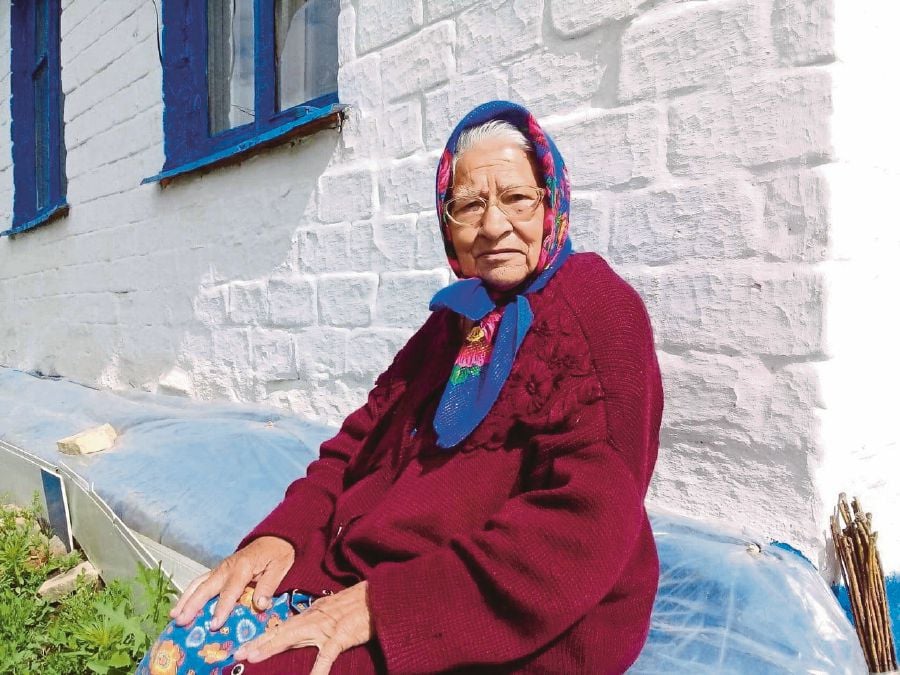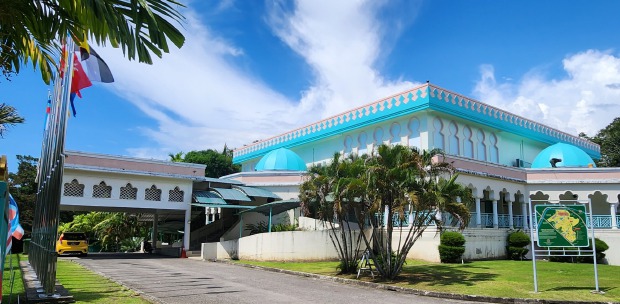Maginur Abdulovna Husainova, a Muslim knitter, lives in the village of Sakmara in the Russian region of Orenburg.
It is impossible to count how many warm downy shawls and finely knit, down-hair lace shawls she has created loop by loop in her life.
They are also called "wedding ring shawls" because the large shawls knit in the traditional fashion are so fine they can be pulled through a wedding ring.
The down hair of Orenburg goats is the thinnest in the world at 16 to 18 micrometres, while that of Angora goats (mohair) is 22 to 24 micrometres. Products made of Orenburg down hair are soft, fine and easily fit into the shell of a goose egg.
I went to her house when I heard the song Orenburg downy shawl — the anthem of the knitters — on the radio.
Maginur learned down-knitting from her mother since she was small. It was a hard time, post-war, and it was necessary to help her parents.
Maginur's father, returning from the front, worked at the elevator. Her mother, too. Besides Maginur, the couple had two more children.
The first scarf Maginur knitted was when she was in fifth grade. She remembered because she had spilt ink on it. Her family helped her wash it off, but traces of it remained. The scarf was sold for half the usual price.
After leaving school, Maginur went to work in a cooperative. From Orenburg, they brought yarn and the middle part of the shawls, which were machine- made. These prefabricated shawls were manually knitted at the edges.
For one scarf they got nine rubles. The norm was five pieces a month. So you can count how much they were paid. Making more was discouraged as this could be at the expense of quality.
Therefore, they had to be cunning. If there's more, say it's from a neighbour. And, of course, sell it themselves.
Maginur prefers to knit web-like white shawls. These are made of white goat down, and are delicate and thin. The grey ones are called down hair shawls.
They are thick and warm, and take a longer time to make.
Because of the high costs of
down hair and yarn, a hand-made Orenburg shawl is expensive.
Maginur showed me a shawl that was almost ready. It needed to be washed in warm water and stretched on a hoop — a rectangular frame studded with nails — before it could be sold to a customer. Stretching is the last and most enjoyable part of the process.
These scarves never go out of fashion, but their shapes change. And there are a lot of patterns. Each knitter tries to keep them secret. There is a belief — if you share your pattern with someone, it will "run away", and the scarves will no longer be perfect.
Maginur told me that she put her soul into the scarves. Therefore, they are dear to her. The Orenburg scarves are highly valued abroad.
In 1958, they were awarded the Great Silver Medal of the World Exhibition in Brussels. In Japan, they are hung on the wall for beauty, like carpets.
Maginur treasures the memory of singer Joseph Kobzon's stay in Sakmara. When he performed at the local House of Culture in the early 1970s, he was given a scarf she knitted as a present. She thinks it is nice to know that it is warming up someone close to the singer.
Maginur has retired for a long time, but she does not give up her beloved work as it brings
her pleasure and additional income.
Two of her scarves are kept in Malaysian museums — one in the Islamic Arts Museum Malaysia and the other in the Asian Art Museum of Universiti Malaya.
When you visit them, do admire the products of a Muslim woman from distant Sakmara.
SAKMARA WEDDING RING SHAWLS




